Pak Tha Le, Phetchaburi, Thailand
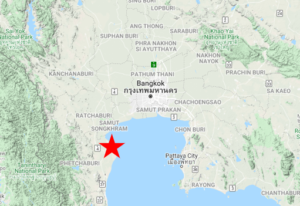
The salt pans, lagoons, and estuary at Pak Tha Le are semi-formally established refuge for migratory shorebirds, wintering grounds for large flocks of Eurasian Curlew, Whimbrel (Siberian form), Great Knot, and many other shorebirds. The site is known as the most likely place to find a Spoon-billed Sandpiper, and other rarities often turn up.
Orientation
Directions
Pak Tha Le is approximately two hours’ drive (110 km) southwest of Bangkok. The shortest way to reach it is to take Route 35 west for 75 km to Samut Songkhram, then turn south onto Route 2021 toward Bang Kabun and follow the main coastal road southward.
The road number changes to 4012 and after about 35 km south of Route 35 it reaches the village of Pak Tha Le. Turn left and follow the southern edge of the village for about 750 m, where it turns into the salt pans.
Birdfinding
Pak Tha Le is predominantly a shorebird site, with a few other open-country and wetland birds. Most visitors combine it with a longer visit to Laem Pak Bia, 12 km south, which opens the possibility of finding all of Thailand’s regularly occurring shorebirds in a single day. Most of the regionally common shorebirds occur regularly at both sites, but each has a few species that are more regular there than at the other.
The prize bird of Pak Tha Le is the Spoon-billed Sandpiper, found as regularly there as at any other readily accessible site (with Khok Kham being the only comparably consistent accessible site). Pak Tha Le is also noted for Eurasian Curlew, Whimbrel (Siberian form), Great Knot, Terek Sandpiper, Chinese Egret, and its history of regionally rare vagrants. Rarities that occur with some regularity, but mainly during migration, include: Asian Dowitcher, Far Eastern Curlew, Gray-tailed Tattler, and Nordmann’s Greenshank.
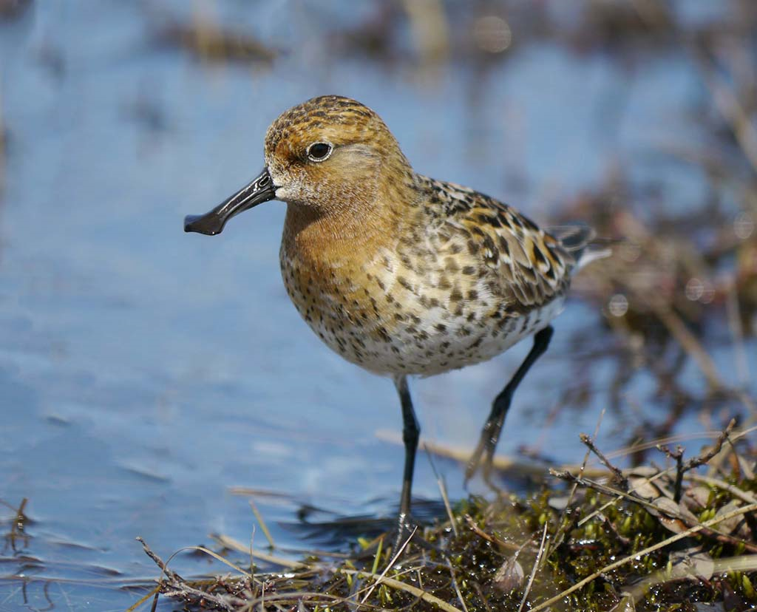
The extraordinary and critically endangered Spoon-billed Sandpiper is probably seen more often at Pak Tha Le than at any other site. © Martin J. McGill
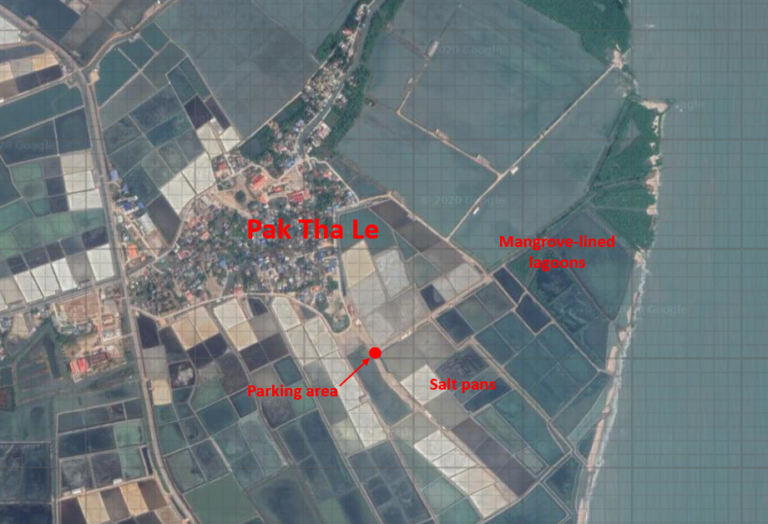
Pak The Le also differs from Laem Pak Bia in being simpler to navigate. There is a single parking area, with signage. Then there are two directions to explore: south and east. To the south are several salt pans that host large flocks of terns and shorebirds, including a small number (up to five or so) Spoon-billed Sandpipers often among them. To the east are a few mangrove-lined lagoons where the water is a little deeper and some long-legged waders feed.
Chinese Egret appears to be regular at Pak Tha Le, but is easily overlooked among the many Little and Intermediate Egrets. In winter, it is a good place to compare Greater and Lesser Sand-Plovers, which look extremely similar (see below) unless seen side-by-side, as is often possible here.
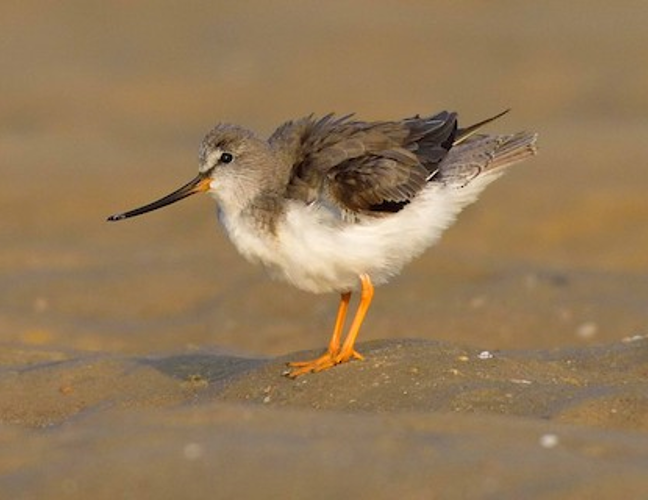
Pak Tha Le is a reliable site for Terek Sandpiper. © Vineeth Kumar
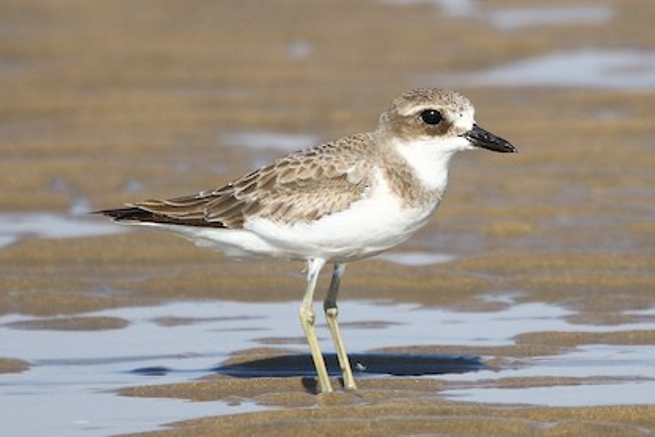
Lesser Sand-Plover in winter plumage (above) is nearly identical to Greater, but has a thicker-looking bill. © Bhaarat Vyas
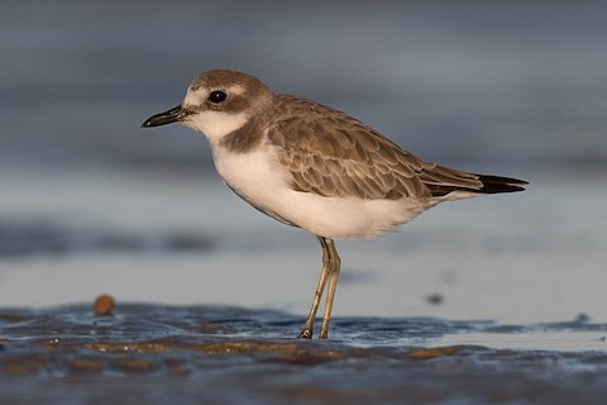
Greater Sand-Plover (above) is about 15% larger than Lesser and has a proportionately longer, thinner bill. © Terence Alexander
Notes
When to Visit
Most of the sought-after species for which Pak Tha Le is known are migrants and winter visitors. Spoon-billed Sandpiper, clearly the top prize, is present mainly from late October to early April. A few individuals of some migratory species may be present at any time of year, but the site is mostly empty from May into July.
Links